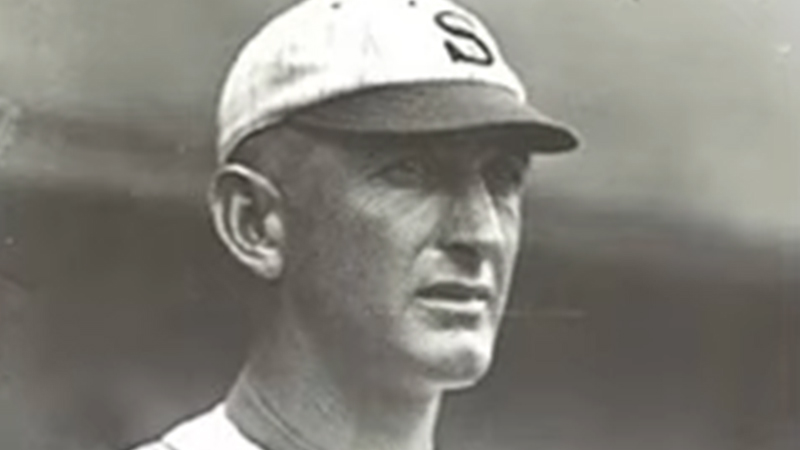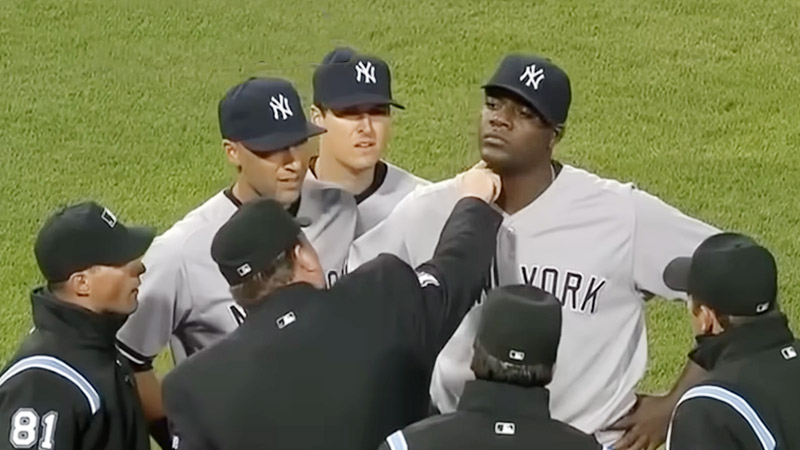Cheating in baseball has unfortunately been a part of the sport’s history, with players, coaches, and teams seeking unfair advantages through various means. From sign-stealing scandals to the use of performance-enhancing drugs, instances of cheating have cast a shadow over the integrity of the game.
While Major League Baseball (MLB) has taken steps to address and deter cheating, new cases continue to emerge.
This article explores notable examples of cheating in baseball, both historical and recent, shedding light on the impact of these incidents and the measures taken to maintain fair play.
Most Recent Examples of Cheating in Baseball
Cheating is very common in baseball and it is happening all the time. Here are the 10 most recent examples of cheating in baseball
The Houston Astros Sign-Stealing Scandal (2017-2018)
In one of the most infamous cheating scandals in recent baseball history, the Houston Astros were found guilty of using technology to steal signs during their 2017 championship-winning season.
The team used a camera positioned in the center field to relay signs to the dugout, where players would bang on trash cans to signal the upcoming pitch to their hitters. This scandal tarnished the team’s reputation and led to the suspension and subsequent firing of several individuals involved.
The Boston Red Sox Apple Watch Incident (2017)
The Boston Red Sox were caught using an Apple Watch to receive stolen signs from the New York Yankees during a regular-season game in 2017.
The Red Sox players and staff used the smartwatch to relay the stolen signs to their batters in real-time. The incident resulted in a fine for the Red Sox organization.
Steroid Era (1990s-2000s)
During the 1990s and early 2000s, numerous players were involved in the use of performance-enhancing drugs (PEDs) such as anabolic steroids and human growth hormone (HGH).
Players like Barry Bonds, Mark McGwire, and Sammy Sosa achieved record-breaking home run numbers during this era, but their accomplishments were marred by the discovery of their PED usage.
The Biogenesis Scandal (2013)
In 2013, a Florida-based anti-aging clinic called Biogenesis was exposed as a supplier of PEDs to numerous professional baseball players.
The scandal implicated several high-profile players, including Alex Rodriguez, Ryan Braun, and Nelson Cruz. The players involved received suspensions ranging from 50 to 211 games.
The Rafael Palmeiro Steroid Suspension (2005)
Rafael Palmeiro, a prominent player in Major League Baseball, tested positive for the anabolic steroid stanozolol in 2005.
This incident was particularly notable because Palmeiro had previously testified before Congress, vehemently denying his use of PEDs. The positive test led to a 10-day suspension and cast doubt on his credibility.
The Gaylord Perry Spitball (1970s)
Gaylord Perry, a Hall of Fame pitcher, was infamous for doctoring baseball with substances such as Vaseline or saliva to gain an unfair advantage.
Though he was never caught in the act, his reputation as a master of the spitball earned him both criticism and admiration.
The Black Sox Scandal (1919)
The Black Sox Scandal involved eight members of the Chicago White Sox intentionally throwing the 1919 World Series against the Cincinnati Reds. The players, including “Shoeless” Joe Jackson, were bribed by gamblers to intentionally lose games.
This scandal shocked the baseball world and led to the banishment of the implicated players from professional baseball.

Corked Bat Incidents
Over the years, multiple players have been caught using corked bats, where the insides of the bat are hollowed out and replaced with cork or other lighter materials. The idea behind corking a bat is to increase bat speed and improve hitting performance.
Players such as Sammy Sosa, Albert Belle, and Billy Hatcher have been caught with corked bats, resulting in suspensions and fines.
The New York Mets Sign-Stealing Scandal (2020)
During the 2020 season, the New York Mets were accused of using a video replay room to illegally decode and relay signs to their hitters.
The scheme involved a staff member in the replay room using electronic communication to transmit sign information to the dugout and then to the players. The Mets were fined and the staff member involved was terminated.
Performance-Enhancing Drug Suspensions (ongoing)
While baseball has made efforts to combat the use of PEDs, players continue to be caught and suspended for their involvement.
Notable recent cases include Robinson Cano’s 2021 suspension for a second positive test for a banned substance, and the 2021 suspensions of pitchers Michael Pineda and Chris Devenski.
These ongoing incidents serve as a reminder that cheating through the use of performance-enhancing substances remains an issue in baseball.
Historical Example of Cheating in Baseball
As I’ve said before, cheating is not a new thing in baseball. It even happened in the previous and the earliest era as well. Here are the 10 most historical cheating scandals in baseball.
The Louisville Grays’ Hidden Ball Trick (1877)
In a game against the Hartford Dark Blues, the Louisville Grays pulled off a cleverly hidden ball trick to secure an out. As the Hartford player was returning to the base, the Louisville infielder pretended to have the ball and tagged the runner.
However, the ball was hidden in the pocket of another infielder, and the umpire ruled the runner out.
The Chicago White Sox “Hit and Run” Scandal (1900)
During a game against the Detroit Tigers, the Chicago White Sox were trailing by a run in the bottom of the ninth inning.
The White Sox runner on first base intentionally interfered with the Tigers’ second baseman to break up a potential double play, allowing the winning run to score. The umpire, unaware of the intentional interference, declared the run valid, leading to a controversial victory for the White Sox.
The Philadelphia Phillies Ball Stealing (1900)
In a game against the Brooklyn Superbas, the Philadelphia Phillies employed ball-stealing tactics.
Whenever a Brooklyn player hit a foul ball, a young boy seated behind home plate would retrieve the ball and toss a different ball to the Phillies’ catcher. This ensured that the Superbas’ hits did not count, giving an unfair advantage to the Phillies.
The Chicago Cubs’ Gimmick Balls (1908)
During the 1908 season, the Chicago Cubs allegedly used “gimmick balls” to deceive opposing teams. These balls were altered with concealed substances, such as wax or a hollow rubber core, to affect their flight and make them difficult to hit or field. The exact extent of the Cubs’ use of gimmick balls remains a subject of debate.
The Detroit Tigers’ Sign-Stealing (1940s)
The Detroit Tigers were known for their elaborate sign-stealing system during the 1940s. The team stationed a player in the center field bleachers who used binoculars to decode the opposing catcher’s signs.
The signs were then relayed to the Tigers’ hitters using a system of hand signals, giving them an unfair advantage at the plate.
The Pete Rose Betting Scandal (1989)
In one of the most notorious cases in baseball history, Pete Rose, a former player and manager, was accused of betting on baseball games, including those involving his own team, the Cincinnati Reds.

Rose denied the allegations for years but eventually admitted to betting on baseball in 2004. As a result, he was banned from the sport and remains ineligible for induction into the Baseball Hall of Fame.
The New York Giants Sign Stealing (1951)
During the 1951 season, the New York Giants famously employed a system of sign-stealing using a telescope and a buzzer system.
From the center-field clubhouse at the Polo Grounds, coach Herman Franks would decode the catcher’s signs using the telescope and then relay the information to the Giants’ hitters through a buzzer system in the dugout.
The Atlanta Braves Foreign Substance Controversy (2014)
In a game against the Los Angeles Dodgers in 2014, Atlanta Braves pitcher David Carpenter was caught with a foreign substance (rosin and sunscreen mixture) on his arm.
The Dodgers manager, Don Mattingly, requested an inspection, leading to Carpenter’s ejection from the game. This incident raised questions about the use of foreign substances by pitchers to alter the ball’s grip and movement.
The Cleveland Indians’ Corked Bat Incident (1994)
During a game against the Chicago White Sox in 1994, Cleveland Indians outfielder Albert Belle’s bat shattered, revealing a corked core.
Belle was subsequently suspended for ten games, and the incident raised suspicions about his past performances and the potential use of corked bats by other players.
The New York Yankees’ Pine Tar Incident (1983)
In a game against the Kansas City Royals in 1983, New York Yankee’s third baseman George Brett hit a go-ahead home run, only to have it nullified due to an excessive amount of pine tar on his bat.
The umpires deemed the bat illegal, and the home run was overturned, causing an uproar. The incident led to a protest by the Royals, and the game was later resumed from the point of Brett’s home run.
FAQs
How does cheating in baseball impact the game?
Cheating in baseball undermines the fairness and integrity of the sport. It can lead to unjust outcomes, compromise player safety, and erode trust among fans. It also stains the legacies of players involved in cheating scandals.
What measures has MLB taken to combat cheating?
MLB has implemented various measures to address cheating, including stricter drug-testing protocols, technological advancements to prevent sign-stealing, increased penalties for offenders, and the use of instant replay to review questionable calls.
Are there specific rules regarding cheating in baseball?
MLB has a comprehensive set of rules and regulations that govern player conduct and fair play. These rules cover areas such as performance-enhancing drugs, doctoring baseballs, sign-stealing, corked bats, and gambling.
Can cheating in baseball lead to legal consequences?
While cheating in baseball is primarily handled within the framework of MLB and its disciplinary processes, there have been instances where legal consequences arise.
For example, the use of illegal substances or involvement in gambling can have legal implications beyond the realm of baseball.
How can fans trust the legitimacy of the game after cheating scandals?
Rebuilding trust after cheating scandals is a challenging task. Transparency, swift and appropriate punishments, and consistent enforcement of rules are crucial in reassuring fans that the league is committed to maintaining fairness and integrity in baseball.
Wrapping Up
Cheating in baseball has had a profound impact on the sport, tarnishing the reputation of players, and teams, and even eroding the trust of fans.
The examples discussed in this article highlight the diverse methods employed by individuals and organizations to gain an unfair advantage. However, it is important to note that not all instances of cheating are created equal, as some offenses carry more severe consequences than others.
MLB has implemented various measures, including rule changes, technological advancements, and stricter testing protocols, to combat cheating and protect the integrity of the game.
It is crucial for players, coaches, and fans to prioritize fair play and ethical conduct to preserve the spirit of competition in baseball. Thank you for staying with us.







